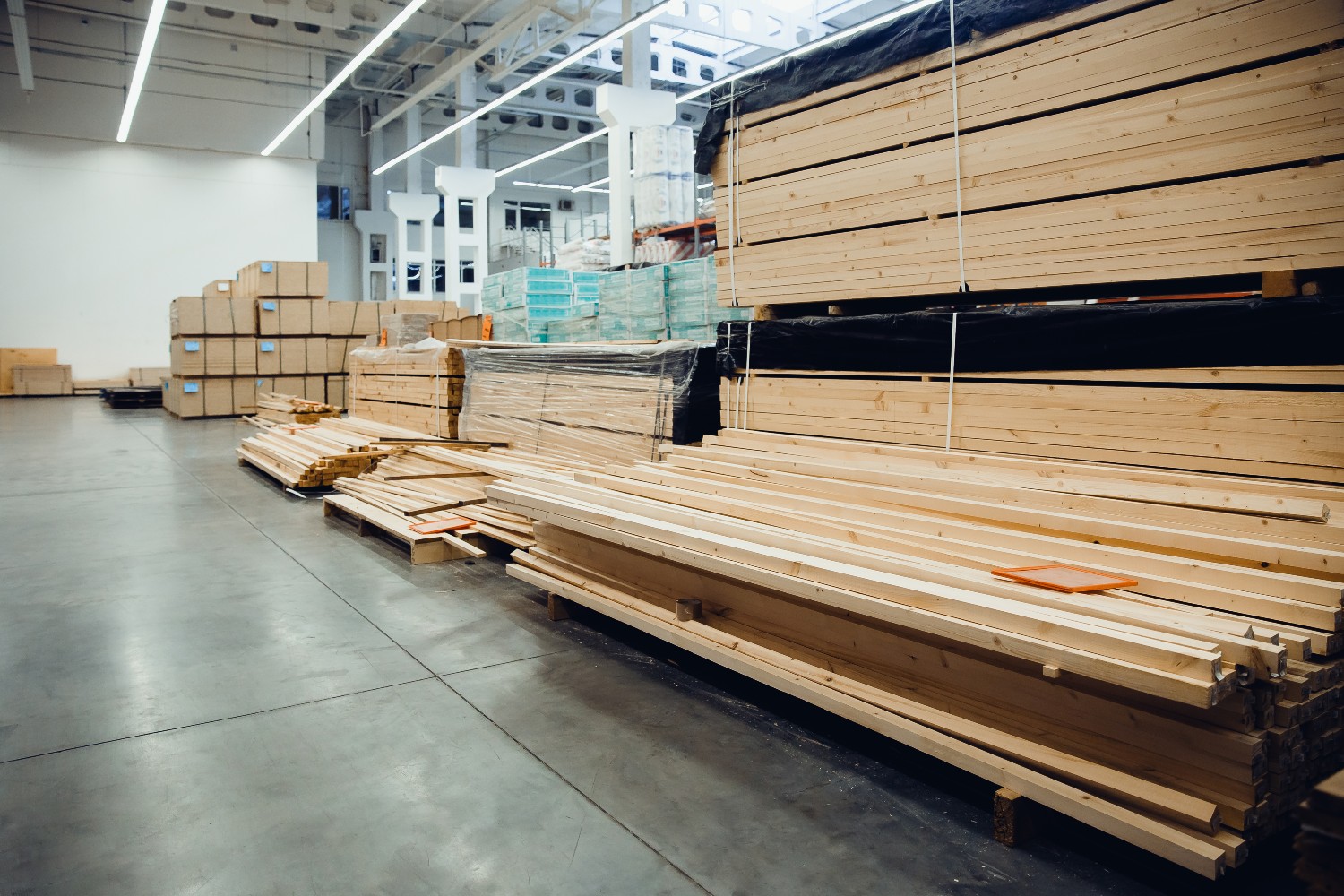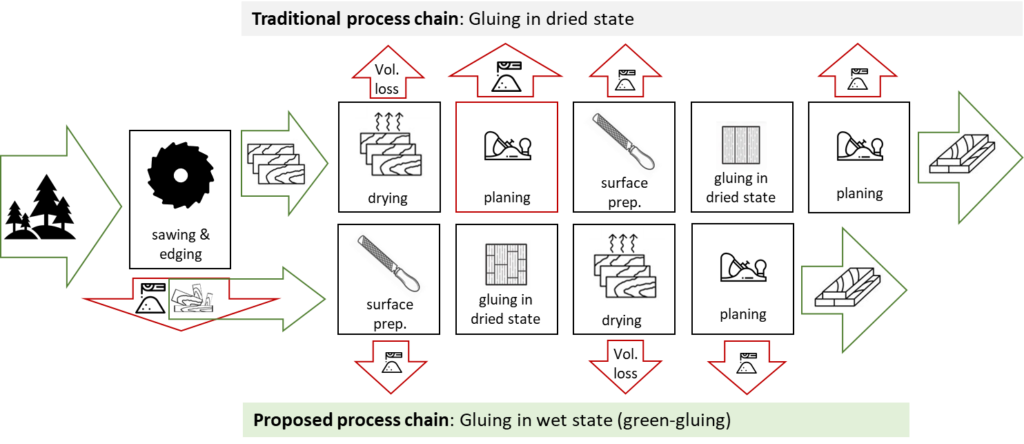Surfaces for sustainable engineered wood products (WOODsurf)

Today about 5 000 000 m3 of sawdust are produced per year as a side effect of Sweden’s production of sawn wood products. By decreasing the saw cut width, which is often set too wide to compensate for dimensional demands later in the production, a better use of virgin wood material can be achieved.
Normally, the saw blades have a width in the range of 2.9-4.4 mm and a reduction of 1.5-2 mm is a realistic target – [2] has, based on simulations, shown that a yield increase of 1.3-1.5% units per mm reduced sawblade thickness is to be expected. A decrease of the cutting width can be achieved by improved saw blade designs and materials, and a control of the cutting dynamics.
To support the development and usage of improved sawblades, resulting sawn wood topography should be measured and defined. Metrology and characterization of products’ functional surfaces are of key importance in smart and sustainable manufacturing but under-utilized within the wood industry. Machining operations do leave recurrent tracks, but wood is a heterogenous biobased material where each type of wood has their own unique internal structures, and each individual has its own anatomy.
As the industry develops, more precise surface qualities are to be delivered with higher demands on surface functions and treatments. If the topography of sawn wood would be known and measurable, it could open up for a more sustainable sawmill production with less resource waste and increased raw material utilization. Especially, sawn wood with better controlled surfaces directly before the drying step (see fig. 1) could allow for green-gluing (wet gluing) allowing to make use of pieces in non-standardised dimensions, resulting in a reduction of waste after drying from 41% to 30%. The resulting engineered wood products (EWPs) can be designed for specific end uses with better defined properties than the sawn wood, which increases the potential use of the wood material.
This feasibility study will define this potential and form a consortium of partners towards a full step 2 application, where metrology and surface characteristics of sawn wood will be developed to produce more sustainable EDWs by using today’s waste.

Project leader
Sabina Rebeggiani, Halmstad University
[email protected]
+46 72 977 36 50
Participating organisations→ Halmstad University
→ Luleå University (Skellefteå)
→ Stenvalls Trä AB
→ Rema Sawco

